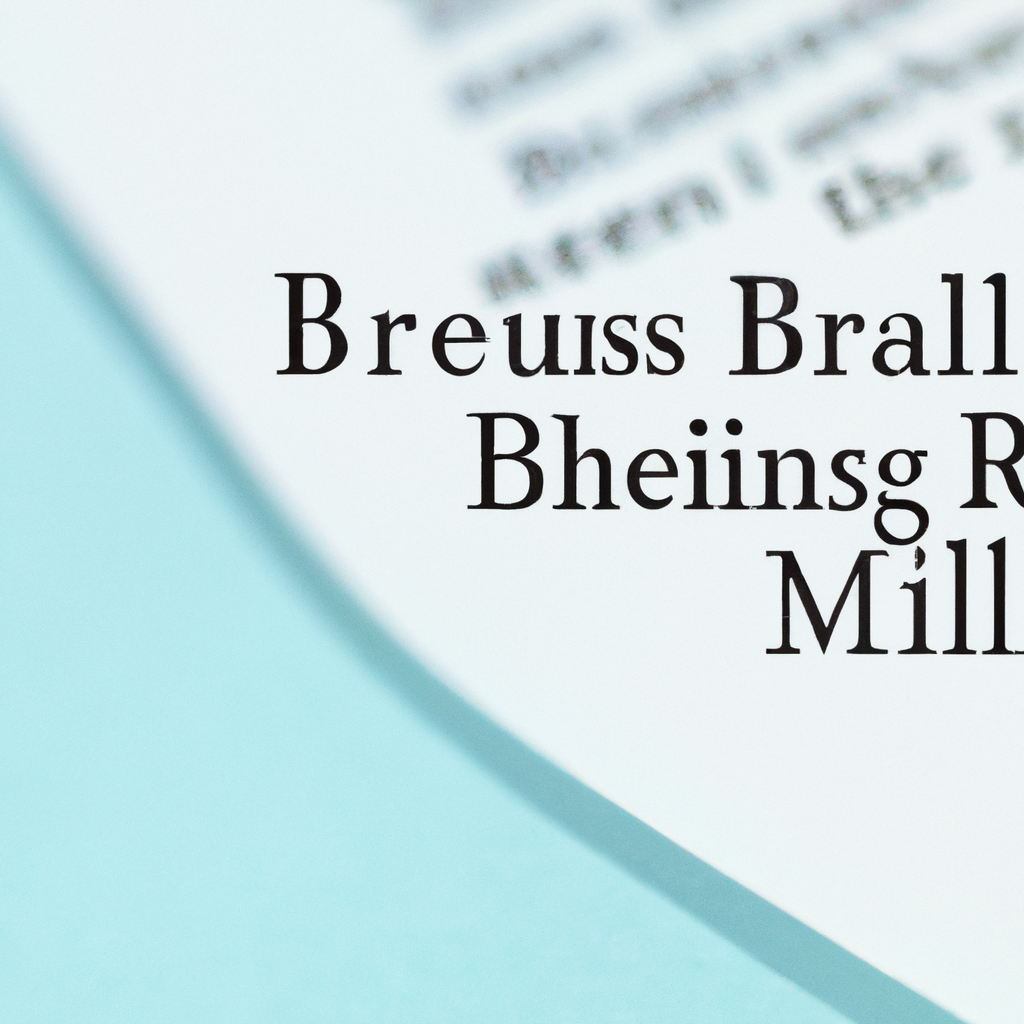These days life is hard, and many of us are feeling the pressure. Stress has become commonplace, and it’s essential we find a way to let off some of the steam and ease the burden. Mindful breathing techniques are an ancient practice that we can all use to our advantage, allowing us to relax and experience the healing power of the breath. In this article we’ll explore how simple mindful breathing techniques can be used for stress relief and offer alternative methods for embracing calm.
1. Taking a Deep Breath: Uncovering Mindful Breathing Techniques
It’s no secret that deep breathing can help bring more peace into our lives –– but sometimes it’s easier said than done. Mindful breathing techniques can help us go beyond the surface and access greater potential for connection with ourselves and our environment.
- Connected Breathing –– Connected breathing involves the use of the diaphragm to inhale and exhale, allowing for deep, slow breaths. It can also involve counting the breaths, focusing on the breath itself and using the natural rhythm of the body to bring yourself into a grateful, mindful state.
- Alternate Nostril Breathing –– This sacred breathing technique is said to be thousands of years old. The practice is easy: take one palm and cover the nostrils, with the thumb closing one nostril, and inhale through the other. Then, switch the thumb and exhale through the other nostril. Working through the rhythm of this technique is said to bring mind and body to a sense of harmony.
Breathing Visualizations –– It’s not just about the air. Visualization techniques can also be incredibly helpful to ensure you’re maximising your lung capacity and attaining a truly mindful, meditative state. Imagine yourself breathing in all the positive energy of the universe and, as you exhale, let go of all worries and stress. Visualizing yourself in a peaceful, calming environment can help you let go too.
2. The Power of Focused Breathing for Stress Relief
Breathing can serve an instrumental role in relieving stress. When you’re stressed, your breathing can become more rapid and shallow, so turning to intentional, mindful breathing is a natural and effective way to identify and alleviate tension. Focusing on your breath is one of the quickest and most reliable sources of comfort.
Specifically, focused breathing, also known as diaphragmatic breathing or belly breathing, can help to relax and unwind a stressed mind and body. Benefits include:
- Reducing anxiety and calming the central nervous system
- Increasing self-awareness
- Lowering heart rate and improving digestion
- Boosting energy levels
Plus, the actual steps of diaphragmatic breathing are simple. First, sit in an upright yet comfortable position, either in a chair or cross-legged on the floor. Place one hand on your abdomen and the other on your chest. As you inhale through your nose, focus on expanding your lower abdomen. You should feel this hand moving outward. Once this breath reaches its full capacity, slowly exhale through your nose, deflating your abdomen. Repeat this several times and be intentional in feeling the breath enter and exit your body.
3. Unlocking the Benefits of Mindful Breathing
Mindful breathing can help us reduce stress, increase focus, and even boost our physical and mental health in the long run. Here are three of the top benefits offered by mindful breathing.
- Reduce Stress. Regular mindful breathing sessions can reduce and prevent stress in our lives. By taking deep, controlled breaths, our bodies can become more relaxed, and our minds can become more clear, allowing us to better manage our emotions, and even reduce physical symptoms of stress.
- Increase Focus. Mindful breathing can also help with concentration. By allowing our bodies to relax, our minds can more easily maintain focus on the task at hand without being distracted by thoughts and worries about the past or future.
- Boost Health. The practice can have a positive effect on our physical health, too. Slow and steady breathing increases oxygen flow throughout the body, which can improve our circulation and even help reduce our blood pressure. It can also be very helpful for those suffering from respiratory conditions like asthma.
Mindful breathing is an easy, yet powerful, tool that anyone can use to improve their mental and physical health. All it requires is a few minutes of focused concentration, and we can reap the benefits of a calmer and more relaxed body and mind.
4. Exploring Common Mindful Breathing Practices
Mindful breathing practices can be an excellent way to reduce stress and anxiety, as well as to bring us into the present moment. Breathing is something we do every minute of every day, and it offers so much potential for self-care and wellbeing. Here are some of the most popular ways to use mindful breathing.
- Take a few deep breaths. Taking a few deep breaths helps us to focus our attention on the moment and is one of the easiest and most popular practices. It enables us to deeply relax our entire body and bring clarity to our thoughts.
- Focus on the breath. By focusing our attention directly on the sensation of the breath, we can begin to recognize all the layers of the experience. We can pay attention to the air entering and leaving the nostrils or the belly rising and falling with the breath.
- Be aware of the body. Mindful breathing can also be about noticing how the body reacts to the breath. How does the body feel when breathing deeply? We can become aware of the tension in the muscles and any sensations that come up.
There are many variations of mindful breathing practices, but the key is to just focus on the breath and be present to the experience in the body. Each practice is a wonderful opportunity to step away from the constant barrage of thoughts and come into the moment.
5. Crafting a Personal Mindful Breathing Practice
Incorporating mindful breathing into your life can be a transformative experience, allowing you to take a step back from everyday stressors and sift through your thoughts in a restful space.
To begin your practice, try to find a quiet place to sit and close your eyes. Begin by focusing on the sensation of your breath. To start, you can slowly inhale and exhale through your nose for four counts, counting up to four as you exhale. As you inhale, imagine a beautiful light surrounding you, filling you up with a sense of balance and peace. This will be your foundation to relaxation as you begin to be more mindful of your inner self. Throughout your practice, make sure to focus on these core principles:
- Acceptance: Welcome in and observe your thoughts, feelings and sensations with a nonjudgmental attitude.
- Non-reactivity: Detach from stress or negative feelings, accepting the present moment for what it is, without reacting.
- Self-awareness: Check in with yourself by regularly reminding yourself where you are and what you’re doing.
Your mindful breathing practice should help you build a strong foundation of self-awareness and balance that is an essential part of self-care. Every so often, make sure to take some time to focus on your breath and center yourself in the present. Surround yourself in a calming light and enter a space of relaxation to simply observe and go within.
6. Mindful Breathing as a Tool for Coping With Stress
Mindful breathing is an incredibly powerful tool to help manage and reduce stress in your life. It is a practice that can help cultivate a sense of calm, focus, and clarity while improving the healing processes in your body. Here are 6 ways mindful breathing can help you cope with stress:
- It helps to reduce the intensity of the “fight or flight” response in your body that is triggered by stressful situations.
- It promotes acceptance and patience towards yourself and others.
- It encourages you to take a break and focus on the present moment.
- It creates a sense of balance and stability in your life.
- It helps to build self-awareness and improve the connection with your body.
- It is a practical tool that can be used in any situation.
Mindful breathing doesn’t need to be complicated or time-consuming. Find a comfortable position and start by simply focusing your attention on the natural rhythm of your breath. Notice the rise and fall of your chest or abdomen, or how the air moves in and out of your nostrils. When distracting thoughts arise, gently recognize them and shift your attention back to your breath. With regular practice, it can become an invaluable tool for managing stress.
Finding a way to reduce our stress can often take work and determination, but mindful breathing can help. With the right techniques and practice, you can harness the power of your breath to settle your mind and relax your body—helpful both in times of stress, and when wanting to bring a moment of peace to your everyday life.




